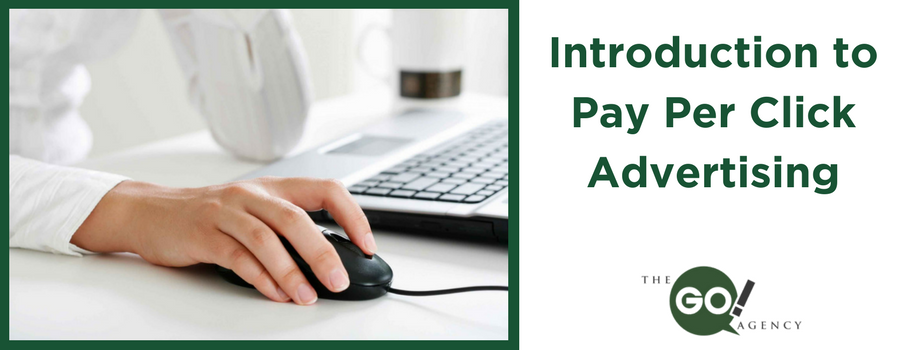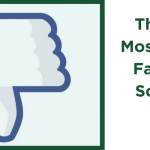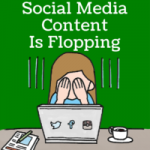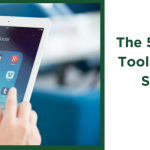What is Pay Per Click?
Pay Per Click (PPC) is most often used to describe the use of buying advertisements on search engines. Most commonly, these ads show up as sponsored search results at the top of search listings.
As opposed to SEO, where content is designed to appear higher on search engines organically, PPC is a way of paying to have your results appear at the top. You only pay for advertisements that are clicked on; thus the name Pay Per Click.
The most popular platform for PPC ads is AdWords, Google’s advertising platform, although all of the major search engines have their version of PPC advertising.
How Pay Per Click Ads Work
To place PPC ads, advertisers first need to figure out who to serve them to.
Since search engines can more or less only reasonably know what words their users are using to search, those words are the basis of connecting an advertiser to their audience.
Search engine users type in a phrase in the hopes of finding a result that will help them. Advertisers use those phrases to decide on who to send their ad to.
As an example, somebody may be searching for “online marketing.” While the advertiser could send the ad for their online marketing company to that person, based on the term “online marketing.”
The trick is for the advertiser to know their customers well enough that they can predict what search terms they will use, then place ads on those same terms.
The issue for PPC platforms is that thousands of people could be searching for “online marketing” and hundreds of advertisers may want to send advertisements to those people. So platforms need a way to work out which advertisers get their ads served.
To do that an auction system is used, where advertisers bid on keywords, with the winner being shown on a searcher’s screen.
How Auctions Work
While money plays an important part in PPC auctions, it’s not the only factor. To rank advertisements and decide on which to show, platforms take into account a few things.
Money is the most important factor though, and an advertiser can choose how much they want to bid against their competitors. The issue with an auction format is that the more popular a search term is for advertisers, the more it will cost to win that search term.
As an example, “website design New York” will most likely be a popular search term. Firstly because of how much traffic it gets, but also because somebody that is typing in the search is likely looking for somebody to build them a new website, so they’d be easy to convert into a sale.
Because of how easy it will be to convert into business, it will be popular to use. Meaning that lots of people will be bidding on it, which will bump up the price.
The size of the bid isn’t the only thing that matters though, search engines also create a quality score for each advertisement. The higher the quality score, the better. The quality score and the bid together create an overall score which is used to rank ads against each other.
Quality Score
The quality score, as the name might suggest, is based on the quality of your ad. This is worked out by looking at a few things:
- Click Through Rate. The more often people click an ad, the better the quality of the ad. So the better an ad performs, the more likely it is to be served to users.
- Landing page quality. If a landing page successfully converts and satisfies the user, that clicked on the ad, then this also improves the quality score. If for instance, users click on the ad, visit the landing page, then immediately return to the search engine it can be assumed the landing page didn’t satisfy what was shown in the advertisement.
- Ad copy and relevance. This ties into Click Through Rate. If people search for “online marketing” but the advertisement is for Mexican food, then the ad is irrelevant to what the person wants to know. The more relevant the ad is to the user, the higher its quality.
Since the winner of an auction is chosen based on both quality score and bid, it’s possible to beat the competition with a lower bid if your ad quality is better.
For example.
Advertiser 1 – Puts in a low bid for the keyword “online marketing” but has a high quality score.
Advertiser 2 – Puts in a higher bid for the keyword “online marketing” but has a low quality score.
When both bid and quality score are taken into account, it’s possible for Advertiser 1 to win the auction, at a lower cost.
What it’s important to take away from this, is that if your advertisement is irrelevant or low quality, it will cost you more to serve it to users. So it’s not all about the money.
Why Use PPC?
So I’ve spoken about PPC and how it works, but why should you use it?The best advantage to PPC is that it can allow you to connect with customers that are interested in your services right now. Presently, when many people are looking to buy something, whether a service or a product, they go to Google to research it.
For example, somebody may be looking for an assisted living facility nearby, so they’d type in “assisted living facility in _______”. Their search suggests they’re quite far along in the buying process, so they would be easy to convert into a sale. Because of this, PPC can be quite lucrative if done well.
At the same time, PPC is also quick to setup and get results from. Once the advertisement is created, it will start to get results immediately, meaning a company can drive revenue from the moment they start using PPC.
As those results come in, they are easy to track. That means if your strategy is unsuccessful, you can adapt in real-time or cut your advertising quickly. So your advertisements improve over time if you stay on top of them.
Another major positive in favor of PPC advertising, is that you’re only paying when somebody clicks on your ad. So only for leads that have a general interest in what you’re selling.
The Downsides of PPC
Now for the drawbacks of PPC.
As with any type of marketing, PPC takes a certain amount of expertise to do successfully. With PPC, if you don’t have the expertise, then it can be costly.
Since part of the cost of PPC comes from having relevant, high-quality ads, if you don’t know how to build a successful advertisement, you could end up overpaying for your ads to run.
Similarly, since you are competing against other advertisers, it’s easy to overspend on running ads against popular search terms. This can be common when first starting with PPC, as you figure out which search terms work best for you within your budget.
Due to the real-time aspects of PPC advertising, it can also take a lot of resources and time to do well. For a smaller marketing team, it might not be the best marketing technique to use, as PPC ads need to be closely monitored.
Running A PPC Successful Campaign
In order to run a successful PPC campaign, you need to be well organized and adapt well to changes in your campaign.
The most important thing to understand is how your PPC budget corresponds to actual revenue. Meaning you should figure out what return on investment you’re getting from your advertising. If your advertising is costing more than the revenue it’s bringing in then you’re costing yourself money.
For that reason, it’s important to set strict goals and expectations before you start your campaign. Then while the campaign is running to stay up to date with your own progression.
As with any marketing strategy, it’s important to figure out your audience. In terms of PPC, that means doing plenty of keyword research before you start, to ensure you’re bidding on the correct phrases for your ads. Spending the time to figure out more niche keywords will show a lot more success later on when your ads start producing results.
Once your ads are running, you need to track them well and adapt to any changes when needed. Don’t be afraid to ditch an ad if it’s not successful.
Lastly, it’s important to remember that a successful ad doesn’t just stop at getting people to click your ad, but you need to also focus on what happens afterward too. The user needs to be nurtured until they’re converted into a sale. The first step towards this is to create landing pages that tie into your ads and encourage your visitors to follow a call-to-action that keeps them in your sales funnel.











